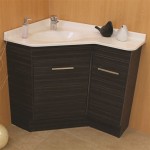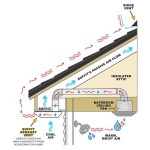Cost to Install Ceramic Tile in Bathroom Floor in Atlanta
Installing ceramic tile in a bathroom floor is a popular choice for homeowners in Atlanta due to its durability, water resistance, and aesthetic appeal. However, understanding the cost involved in such a project is crucial for budgeting and making informed decisions. The total cost to install ceramic tile can vary significantly based on a multitude of factors, including the size of the bathroom, the type of tile selected, the complexity of the installation, and the labor rates in the Atlanta metropolitan area. This article will provide a comprehensive overview of the various cost components involved in a ceramic tile installation project in Atlanta, helping homeowners navigate the process effectively.
The first step in determining the cost is to assess the scope of the project. This involves measuring the area to be tiled and determining the condition of the existing subfloor. A thorough understanding of these factors will provide a foundation for accurate cost estimation.
Tile Material Costs
The most significant factor influencing the overall cost of a ceramic tile bathroom floor installation is the price of the tile itself. Ceramic tiles are available in a wide array of styles, sizes, and qualities, each with a corresponding price point. Basic, builder-grade ceramic tiles can start as low as $1 per square foot, while higher-end, designer tiles can cost upwards of $15 per square foot or more. The choice of tile will depend largely on the homeowner's budget and aesthetic preferences. Furthermore, considering the quantity needed is crucial. It is generally advisable to purchase approximately 10-15% more tile than the measured square footage to account for cuts, waste, and potential future repairs. Unexpected issues during installation and variations in tile batches can necessitate having extra tiles on hand.
Beyond the tile itself, homeowners must also consider the cost of other necessary materials. These include thin-set mortar, grout, sealant, and any necessary underlayment or subfloor preparation materials. The cost of these materials, while often less significant than the tile itself, can still add up, especially for larger bathroom floors. Thin-set mortar, used to adhere the tiles to the subfloor, typically ranges from $15 to $30 per bag, depending on the type and quality. Grout, which fills the spaces between the tiles, typically costs around $20 to $40 per container, also depending on the type and quality. Sealant, applied to protect the grout from moisture and stains, can range from $10 to $20 per bottle.
The type of grout selected can also influence the overall cost. Epoxy grout, for example, is more expensive than cement-based grout but offers superior stain and water resistance, making it a worthwhile investment for many bathroom floors. Pre-mixed grout solutions, while convenient, tend to be more expensive than traditional powder-based grouts that require mixing.
Underlayment or subfloor preparation materials may be necessary if the existing subfloor is damaged or uneven. These materials can include cement board, self-leveling compound, or patching compound. The cost of these materials will depend on the extent of the subfloor preparation required. For example, a small area needing patching might only require a small container of patching compound, while a severely damaged subfloor might require the installation of new cement board, which adds to both material and labor costs.
Labor Costs for Installation
Labor costs represent a significant portion of the total cost of a ceramic tile bathroom floor installation. In Atlanta, labor rates for tile installers can vary based on experience, expertise, and the complexity of the project. Generally, homeowners can expect to pay between $5 and $12 per square foot for labor, depending on these factors.
The complexity of the installation can significantly impact labor costs. A simple, straightforward installation with square or rectangular tiles will typically cost less than a more complex installation involving intricate patterns, mosaics, or irregularly shaped tiles. Diagonal tile layouts, for example, require more cuts and waste, increasing the amount of time and effort required for installation. Similarly, installations involving multiple tile sizes or decorative borders will likely incur higher labor costs.
The condition of the existing subfloor also plays a crucial role in determining labor costs. If the subfloor is uneven, damaged, or unstable, additional preparation work will be required before the tiles can be installed. This may involve leveling the subfloor with self-leveling compound, repairing cracks or holes, or even replacing sections of the subfloor altogether. This additional preparation work will add to the overall labor costs.
The demolition and removal of the existing flooring can also impact labor costs. If the existing flooring is difficult to remove, or if it requires special disposal methods, the labor costs will be higher. For example, removing old vinyl flooring with adhesive can be a time-consuming and labor-intensive process. Similarly, removing old tile flooring can be challenging, especially if the tiles are well-adhered to the subfloor. The disposal of the removed flooring may also incur additional costs, depending on local regulations and disposal fees.
Permits and inspections, while not directly labor-intensive, can also contribute to the overall cost. Depending on the scope of the project and local regulations, homeowners may be required to obtain permits for the installation of a new tile floor. These permits typically involve fees and inspections to ensure that the installation meets building codes and safety standards. While the cost of permits is usually a smaller percentage of the overall expense, it's crucial to factor in these potential costs when budgeting.
Additional Cost Considerations
Beyond the tile and labor costs, several other factors can influence the final cost of a ceramic tile bathroom floor installation. These include the size and layout of the bathroom, the need for additional plumbing or electrical work, and any unexpected issues that may arise during the installation process.
The size and layout of the bathroom directly impact the amount of tile and labor required. Larger bathrooms will naturally require more tile, increasing the material costs. Complex bathroom layouts with many corners, angles, and fixtures will also increase the labor costs, as the installation process will be more time-consuming and challenging.
The need for additional plumbing or electrical work can significantly increase the overall cost. If the installation requires moving or replacing plumbing fixtures, such as toilets or sinks, or if electrical outlets need to be relocated, homeowners will need to hire licensed plumbers or electricians. These services can add hundreds or even thousands of dollars to the project cost. It is important to identify any potential plumbing or electrical needs before starting the installation to avoid unexpected expenses.
Unexpected issues can arise during the installation process, leading to additional costs. For example, hidden water damage beneath the existing flooring may require repairs to the subfloor or framing. Similarly, asbestos contamination may be discovered, requiring professional abatement services. Homeowners should be prepared for the possibility of unexpected issues and budget accordingly.
It is always advisable to obtain multiple quotes from different tile installers before making a decision. This will allow homeowners to compare prices and services and choose the installer that best meets their needs and budget. When obtaining quotes, it is important to provide installers with accurate information about the scope of the project, including the size of the bathroom, the type of tile selected, and the condition of the existing subfloor. It's also important to ask detailed questions about the installer's experience, qualifications, and insurance coverage.
Furthermore, consider the time of year. Contractors in Atlanta might have varying rates depending on their demand, which can be seasonal. It may be possible to negotiate better rates during off-peak seasons. Planning the installation during these periods can potentially lead to cost savings.
Finally, understanding the payment schedule is important. Most contractors will require a down payment upfront, with the remaining balance due upon completion of the project. It is essential to clarify the payment schedule and any potential change order policies before signing a contract.
By considering these factors and doing their research, homeowners in Atlanta can accurately estimate the cost of a ceramic tile bathroom floor installation and make informed decisions about their project.

How Much Does Ceramic Tile Installation Cost 2025

Budgeting For Tiles Average Cost To Retile Abathroom And Options

Bathroom Flooring Costs In Brookhaven Ga What You Need To Know Ranney Blair Weidmann

Budgeting For Tiles Average Cost To Retile Abathroom And Options

How Much Does Tiling A Bathroom Cost 2025

Bathroom Remodeling Costs In Atlanta 2024 Sweeten Com

The 10 Best Shower Tile Installers In Atlanta Ga With Free Estimates

Budgeting For Tiles Average Cost To Retile Abathroom And Options

The 10 Best Ceramic And Porcelain Tile Installers In Atlanta Ga 2025

Bathroom Flooring Options In Atlanta Pros Cons And Choices Ranney Blair Weidmann
Related Posts







